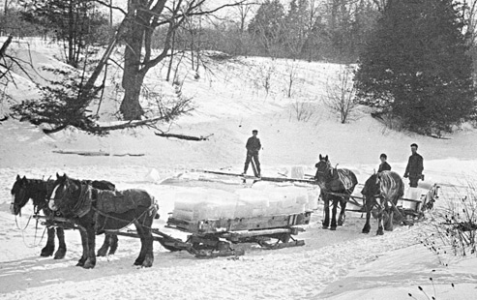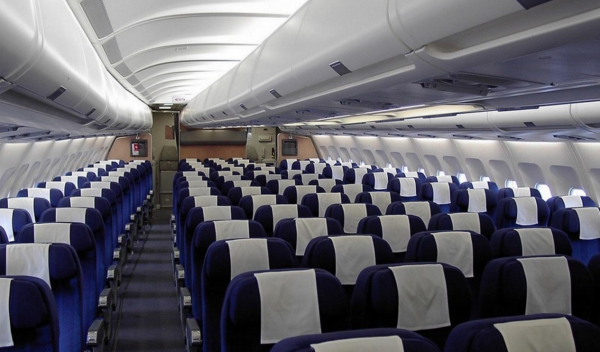I recently received a question that went like this: “What does it mean to be a one ton air conditioner?” The short answer is that it can move 12,000 Btu’s (British Thermal Units) per hour. This got me thinking about why we refer to refrigeration amounts in tons rather than just the more descriptive energy transfer rate (Btu/hr). Turns out, there is a neat and practical reason why air conditioning and refrigeration systems are measured in tons.
Before mechanical refrigeration was invented, keeping something cool when it was warm outside was the job of ice. Ice would be collected during winter, transported to ice houses and stored until it could be sold for use in ice boxes. The block of purchased ice would be put in the ice box and begin to extract the heat out of the air. If the ice started out below 32 °F it would first warm up to it’s melting point (32 °F) and then stay at that temperature until it had melted completed. While the block of ice could extract some heat before it started to melt, the vast majority of the “work” was done while the ice was melting.
With the advent of refrigeration, ice houses started producing their own ice rather than collecting it. During this transition, it became intuitive to refer to amounts of refrigeration in terms of tons of ice produced within a single day (24 hours). A system that could produce 10 tons of ice every day had a 10 ton system.
Some quick math demonstrates how this simple expression become our modern definition: The latent heat of ice (the energy it takes to freeze or melt at a constant temperature) is 144 Btu per pound. If a ton is 2000 lbs, then it takes approximately 288,000 Btu to freeze one ton of ice. Giving the system a day to create the ice you can convert 288,000 Btu per day to Btu per hour and you get the modern definition of 12,000 Btu/hr.
Eventually, home refrigerators and air conditioning reduced the need for dedicated ice houses and the trade disappeared. However, we still measure refrigeration amounts in tons of refrigeration. A home air conditioner is usually 1 to 5 tons while a home refrigerator is only around 1/4 of a ton. Commercial systems can be as small as residential systems or chilled water systems with the tonnage in the hundreds!
Large refrigeration systems are often designed by the manufacturer. However, it may make sense to have an engineer independently design or review system options to make sure that the system is achieving the owner’s goals. With years of experience designing commercial refrigeration and HVAC systems, Forward Engineers can assist you in your next design, retrofit or remodel project. If you are seeking to work with an engineering firm that is client-centered and strives to provide services that are on time, on budget and exceed expectations, please contact us. We would love to work with you on your next project!



